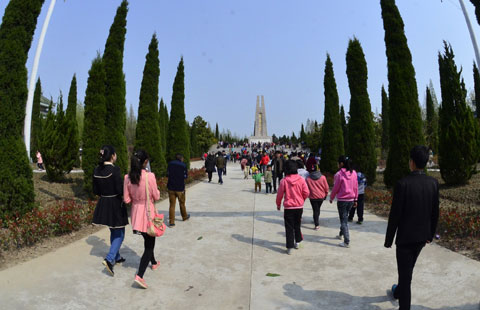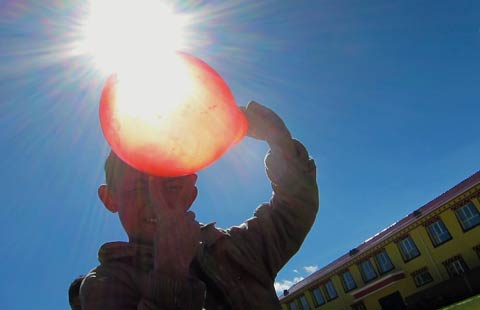Plants used to weed out soil pollution
Updated: 2014-04-18 01:53
By Cheng Yingqi (China Daily)
|
||||||||
Chinese scientists have developed soil remediation technologies to prepare for large-scale applications.
The technologies focus on using plants to absorb heavy metal contaminants in soil.
The technologies were developed by the Center for Environmental Remediation of the Institute of Geographic Sciences and Resources Research under the Chinese Academy of Sciences, which began research 10 years ago.
Soil contamination is serious in China, with large areas of cropland polluted, said Lei Mei, a professor at the center.
Soil remediation technologies have been applied on 133 hectares of land in the Guangxi Zhuang autonomous region, Henan, Yunnan and Hunan provinces and Beijing on a trial basis, and Lei said she believes the technologies will have "good application prospects".
A report from the Ministry of Environmental Protection on Thursday showed that about 19.4 percent of farmland in China was polluted, according to Xinhua News Agency.
"The publication of the survey result is a milestone for soil remediation in China," Lei said.
Before the release of the survey results on Thursday, the latest official data available was released by the Ministry of Land and Resources in 2006. That report said that about 7 percent, or 10 million hectares, of arable land in China was contaminated by heavy metals.
By 2009, the country had 135.38 million hectares of arable land.
In 2005, scientists from the center proved in the laboratory that the plant Pteris vittata, or Chinese brake fern, had cleansing abilities when planted in soil polluted by heavy metals such as lead, zinc, sulfur and arsenic.
After the fern becomes saturated with heavy metals from the polluted soil, the aboveground part of the plant is cut off and burned. A new shoot grows from the root, and the process is repeated.
Field experiments since 2010 on 60 hectares of polluted land in Hechi, Guangxi Zhuang autonomous region, showed the plant can reduce heavy metals by 10 percent a year, which means it can help reduce pollutants to safe levels within three to five years.
The scientists have promoted planting of the fern among local farmers. The ferns are intercropped, or grown in the same fields, as cash crops such as flax.
Meanwhile, scientists are developing a new passivator, which is a coat with an oxide layer that protects against heavy metal contamination of the soil.
Liu Wenhua, chief engineer of the Guangdong province Research Center for Geoanalysis, recently developed a new passivator that could reduce cadmium, lead, copper and zinc in soil.

 Runners and their 4-legged friends race in New York
Runners and their 4-legged friends race in New York
 Top 10 Chinese Internet firms eyeing IPOs in US
Top 10 Chinese Internet firms eyeing IPOs in US
 Chinese cop cadets learn about US police work
Chinese cop cadets learn about US police work
 In Boston, warming up for, remembering marathon day
In Boston, warming up for, remembering marathon day
 Families of missing passengers face agonising wait
Families of missing passengers face agonising wait
 Couple leave the city for 'Self-sufficiency Lab'in mountains
Couple leave the city for 'Self-sufficiency Lab'in mountains
 Turning waste into something valuable
Turning waste into something valuable
 Dignitaries put their foot down
Dignitaries put their foot down
Most Viewed
Editor's Picks

|

|

|

|

|

|
Today's Top News
Scientists discover most earth-like planet
UN celebrates 2014 Chinese Language Day
4th US Navy official charged in bribery scheme
Nobel winner Marquez dies at 87
Chinese keen on Google Glass
Ferry's captain under probe
Texas seizes polygamist group's secluded ranch
In Boston, people remembering marathon day
US Weekly

|

|








